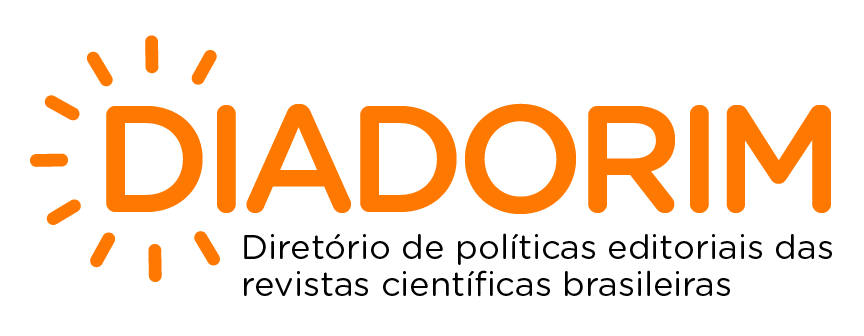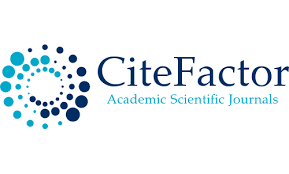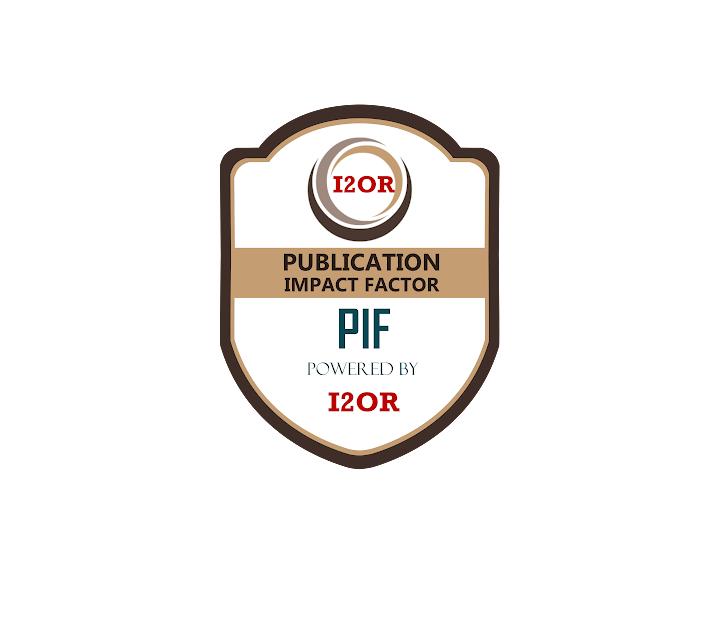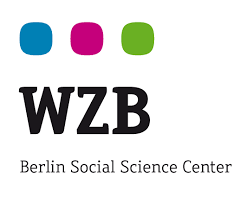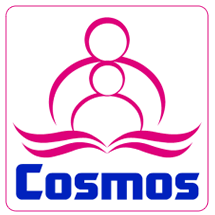ANALYZING FUNCTIONAL DISTURBANCES OF ANXIETY DISORDER IN ADOLESCENTS 14 TO 19 YEARS THROUGH OCCUPATIONAL THERAPY
DOI:
https://doi.org/10.53612/recisatec.v1i2.18Keywords:
Adolescent; Occupational Therapy; Mental Health; Anxiety DisorderAbstract
Adolescence is characterized by a stage full of challenges, permeated by ambivalent feelings, which, if poorly elaborated, may lead to physical and/or mental and functional illness. Objective: To investigate the level of functional losses and symptoms of anxiety, depression and stress in elementary and high school students that alter the performance of daily activities and their implications on the health of adolescents. Methodology: Intervention research with a quanti-qualitative approach, where the students had a voice to analyze their own reality. Data collection took place during the free periods of classes, with the application of the DASS-21 and workshops. The analysis was based on the test scores and on the behavior changes of the adolescents during the course of the research. Results: Participated 113 adolescents, 71% girls, of which 77% showed symptoms of depression, 82% anxiety and 90% stress, with moderate and severe levels. In the functional area, the greatest losses were related to the area of activity and participation and environmental factors, with 93% related to interpersonal relationships and support. Conclusion: The workshops represented an effective tool for the adolescents to manage to express their internal conflicts, and constituted occupational therapy instruments to care for the young population of the municipality, favoring the development of new strategies to deal with this disease that affects a considerable number of young people and produces great damage to their quality of life.
Downloads
References
Allain-Regnault, M.; Bwibo, N. O. & Chigier, E. (1986). Young people’s health – A challenge for society. World Health Organization; Technical Report Series, Geneva, 731, 1–117.
American Pyschiatric Association (APA). (2014). Manual diagnóstico e estatístico de transtornos mentais: DSM-V. 5 ed. Porto Alegre: Artmed.
Andrade J.V., Pereira L.P., Vieira P.A., Silva J.V.S. da, A de Macedo Silva A de, Bonisson M & Castro J.V.L. (2019). Ansiedade: um dos problemas do século XXI. Rev Saúde ReAGES, 2(4),34
Assis, S. G., Avanci, J. Q., Pesce, R. P., & Ximenes, L. F. (2009). Situação de crianças e adolescentes brasileiros em relação à saúde mental e à violência. Ciência & Saúde Coletiva, 14(2), 349-361. DOI: https://doi.org/10.1590/S1413-81232009000200002
Barros RB. (2007). Grupo: a afirmação de um simulacro. Porto Alegre: SuSol.
Barros RB. (2001) Grupo: estratégia na formação. In: Brito J, Barros ME, Neves M, Athayde M, organizadores. Trabalhar na escola? “Só inventando o prazer. Rio de Janeiro: Edições IPUB/UFRJ.
Beck, J.S. (2013). Terapia Cognitiva- comportamental: Teoria e Pratica. Porto Alegre. Artmed
Blakemore, S. J.& Mills, K. L. (2014). Is adolescence a sensitive period for sociocultural processing? Annual Review of Psychology, Palo Alto, 65, 187–207. DOI: https://doi.org/10.1146/annurev-psych-010213-115202
Boarati, M. A.; Kause, R. N. & Felício, J. L. (2018). Psiquiatria na adolescência. In: Meleiro A. (Ed.). Psiquiatria: estudos fundamentais. Rio de Janeiro: Guanabara Koogan.
Brasil. Instituto Nacional de Estudos e Pesquisas Educacionais Anísio Teixeira (Inep). (2019). Censo da Educação Superior 2018: notas estatísticas. Brasília, DF.
Brasil: Instituto Brasileiro de Geografia e Estatística – IBGE. (2000). Censo brasileiro, Brasília, DF.
Cabral, M. C & Shinohara, H. (2010). Transtornos de Ansiedade na Criança: Um olhar nas comunidades. Rio de Janeiro: Revista Brasileira de Terapias, 6 (1).
Capra F. (2006). A teia da vida. São Paulo: Cultrix.
Cid, M. F. B. & Gasparini, D. A. (2016). Ações de promoção à saúde mental infanto-juvenil no contexto escolar: um estudo de revisão. Revista FSA, Teresina, 13 (1), 97-114. DOI: https://doi.org/10.12819/2016.13.1.6
Costello EJ & Angold A. Epidemiology (1995). In: March JS. Anxiety Disorders in Children and Adolescents. New York: Guilford.
Cruvinel, M. & Boruchovitch, E. (2004). Síntomas depresivos, estratégias de aprendizagem e rendimento escolar de alunos do ensino fundamental. Psicologia em estudo, 9(3), 369-378. DOI: https://doi.org/10.1590/S1413-73722004000300005
Dahl, R. E. (2004). Adolescent brain development: A period of vulnerabilities and opportunities. Ann. N.Y. Acad. Sci., New York, 1021,1-22. DOI: https://doi.org/10.1196/annals.1308.001
Fleitlich-Bil, Y.K.B.& Goodman, R. (2004). Prevalence of child and adolescent psychiatric disorders in southeast Brazil. Journal of the American Academy of Child and Adolescent Psychiatry, 43 (6), 727-734. DOI: https://doi.org/10.1097/01.chi.0000120021.14101.ca
Johnson, M. K.; Crosnoe, R. & Elder, G. H. (2011). Insights on adolescence from a life course perspective. J. Adolesc. Res., Tucson, 21(1),273–280. DOI: https://doi.org/10.1111/j.1532-7795.2010.00728.x
Jones, P. B. (2013). Adult mental health disorders and their age at onset. Br. J. Psychiatr., London, 202 (54). DOI: https://doi.org/10.1192/bjp.bp.112.119164
Kieling, C., & Belfer, M. (2012). Oportunidade e desafio: A situação da saúde mental da infância e adolescência no Brasil. Revista Brasileira de Psiquiatria, 34(3), 241-244. DOI: https://doi.org/10.1016/j.rbp.2012.05.003
Last CG, Hersen M, Kazdin A, Orvaschel H & Perrin S. (1991). Anxiety disorders in children and their families. Arch Gen Psychiatry. 48, 928-34. DOI: https://doi.org/10.1001/archpsyc.1991.01810340060008
Leahy, R. L . (2011). Livre de Ansiedade. Porto Alegre. Artmed.
Lopes, F. G.; Carvalho, M.L. & Barbosa, F.S. (2014). Neurobiologia das doenças mentais. 5. Ed. São Paulo: Lemos.
Lovibond, P., & Lovibond, S. (1995). The structure of negative emotional states: Comparison of the depression anxiety stress scales (DASS) with the Beck Depression and Anxiety Inventories. Behaviour Research and Therapy, 33(3), 335-343 DOI: https://doi.org/10.1016/0005-7967(94)00075-U
Menezes, G.B, Fontenelle L.F., Mululo, S. & Versiani, M. (2007). Resistência ao tratamento nos transtornos de ansiedade: fobia social, transtorno de ansiedade generalizada e transtorno do pânico. Rev Bras Psiquiatr, Porto Alegre, 29 (supl.2), 55-60. DOI: https://doi.org/10.1590/S1516-44462007000600004
Moura, I. M., Rocha, V. H. C., Bergamini, G. B., Samuelsson, E., Joner, C., Schneider, L. F., & Menz, P. R. (2018). A terapia cognitivo-comportamental no tratamento do transtorno de ansiedade generalizada. Revista Científica Da Faculdade De Educação E Meio Ambiente, 9(1), 423–44. DOI: https://doi.org/10.31072/rcf.v9i1.557
Obelar. R. M. (2016). Avaliação psicológica nos transtornos de ansiedade: estudos brasileiros, Universidade Federal do Rio Grande do Sul – Instituto de Psicologia, Monografia apresentada do Curso de Especialização em Avaliação Psicológica.
Pezzato LM & L’Abbate S. (2011). O uso de diários como ferramenta de intervenção da Análise Institucional: potencializando reflexões no cotidiano da Saúde Bucal Coletiva. Physis, 21(4),1297-1314. DOI: https://doi.org/10.1590/S0103-73312011000400008
Pitta, J. C. N. (2011). Como diagnosticar e tratar transtornos de ansiedade. Revista Brasileira de Medicina, 68 (12), 6-13.
Pollock MH, Otto MW, Sabatino S, Majcher D, Worthington JJ & McArdle ET. (1996). Relationship of childhood anxiety to adult panic disorder: correlates and influence on course. Am J Psychiatry. 153, 376-8. DOI: https://doi.org/10.1176/ajp.153.3.376
Mendes, LM & Pezzato, DP Pesquisa-intervenção em promoção da saúde: desafios metodológicos de pesquisar “com”. Ciênc. saúde colet. 21 (6) DOI: https://doi.org/10.1590/1413-81232015216.07392016
Reyes, A. N & Fermann, I. L. (2017). Eficácia da terapia cognitivo-comportamental no transtorno de ansiedade generalizada. Rev. bras.ter. cogn., Rio de Janeiro, 13 (1),49-54.
Rocha, T., Zeni, C., Caetano, S., & Kieling, C. (2013). Mood disorders in childhood and adolescence. DOI: https://doi.org/10.1590/1516-4446-2013-S106
Revista Brasileira de Psiquiatria, 35, 22-31.
Salk RH, Hyde JS & Abramson LY. (2017). Gender differences in depression in representative national samples: meta-analyses of diagnoses and symptoms: Meta-analyses of diagnoses and symptoms. Psychological Bulletin. 143(8):783-822. DOI: https://doi.org/10.1037/bul0000102
Saravanan C & Wilks R. (2014). Medical Students’ Experience of and Reaction to Stress: The Role of Depression and Anxiety. The Scientific World Journal. 14, 1-8 DOI: https://doi.org/10.1155/2014/737382
Silverman WK & Ginsburg GS. (1995). Specific phobia and generalized anxiety disorder. In: March JS, Anxiety Disorders in Children and Adolescents. New York: Guilford Press.
Torresan, R. C, Smaira S.I., Ramos-Cerqueira A.T.A. & Torres. A.R. (2008). Qualidade de vida no transtorno obsessivo-compulsivo: uma revisão. São Paulo: Rev. Psiquiat. Clín., 35 (1), 13-19. DOI: https://doi.org/10.1590/S0101-60832008000100003
Wang C, Pan R, Wan X, Tan Y, Xu L & Ho CS. Immediate psychological responses and associated factors during the initial stage of the 2019 coronavirus disease (COVID-19) epidemic among the general population in China. Int J Environ Res Public Health. 2020;17(5):1729 DOI: https://doi.org/10.3390/ijerph17051729
Werner AS, Ryser L, Huber E, Uebelhart D, Aeschlimann A & Stucki G. (2002). Use of the ICF model as a clinical problem-solving tool in physical therapy and rehabilitation medicine. Phys Ther;,22,1099-107
World Health Organization (2003). Classificação internacional de funcionalidade, incapacidade e saúde. São Paulo: Edusp.
World Health Organization (2012). Adolescent mental health: Mapping actions of nongovernmental organizations and other international development organizations. Geneva
Downloads
Published
How to Cite
Issue
Section
Categories
License
Copyright (c) 2021 RECISATEC - SCIENTIFIC JOURNAL HEALTH AND TECHNOLOGY

This work is licensed under a Creative Commons Attribution 4.0 International License.
Os direitos autorais dos artigos/resenhas/TCCs publicados pertecem à revista RECISATEC, e seguem o padrão Creative Commons (CC BY 4.0), permitindo a cópia ou reprodução, desde que cite a fonte e respeite os direitos dos autores e contenham menção aos mesmos nos créditos. Toda e qualquer obra publicada na revista, seu conteúdo é de responsabilidade dos autores, cabendo a RECISATEC apenas ser o veículo de divulgação, seguindo os padrões nacionais e internacionais de publicação.













